Today we go off topic to give you a quick introduction to a special place. It is written by my better half Greg, who is a born and bred Capetonian (and has the delicious accent to go along with it). We met in Cape Town, South Africa 22 years ago and have been together ever since. For many reasons Cape Town ranks as one of my favourite cities of all. Its natural beauty is stunning, the people are relaxed and friendly, the weather is gorgeous, and Cape Malay food is sublime. If you ever get the chance to visit, go!
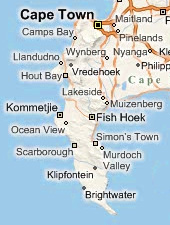 Imagine a mountain range on one of the the Southern most points of Africa, curling into the ocean like a slightly crooked index finger reaching Southwards to Antarctica. This is the Cape Peninsula. In less than half an hour you can drive from the warm Indian Ocean on the Eastern side of this peninsula, to the icy Atlantic Ocean at the foot of its Western slopes. On the way you will see vineyards, Oak trees and “Fynbos”, the indigenous plants that are unique to the coastline of South Africa and constitute the smallest and the richest of the world’s six floral kingdoms.
Imagine a mountain range on one of the the Southern most points of Africa, curling into the ocean like a slightly crooked index finger reaching Southwards to Antarctica. This is the Cape Peninsula. In less than half an hour you can drive from the warm Indian Ocean on the Eastern side of this peninsula, to the icy Atlantic Ocean at the foot of its Western slopes. On the way you will see vineyards, Oak trees and “Fynbos”, the indigenous plants that are unique to the coastline of South Africa and constitute the smallest and the richest of the world’s six floral kingdoms.
At the base of the Cape Peninsula is the city of Cape Town, a mashup of Dutch, British, Cape Malay and African cultures. It lies at the foot of its most famous landmark, Table Mountain (Angie calls this “Our Mountain”), and opens out onto a working harbour. The combination of mountain, city and sea is breathtakingly beautiful and quite unique. This is where I grew up. It is where Angie and I met, where we went to University, and where we got married.

These days we are tourists in my hometown. We stayed at a hotel in the Victoria & Alfred Waterfront, a collection of shops, hotels and restaurants that has consumed the harbour over the last 20 years or so. Every morning we enjoyed breakfast with a view of the harbour, the city and Our Mountain. One of the highlights of the trip.
Normal Winter weather is stormy and cold, but we were lucky enough to get two beautiful, clear days. On our first day we walked into a familiar “City Bowl” (downtown Cape Town), a modern city center filled with sassy cafes, small shops, large department stores, modern skyscrapers, historical Cape Dutch architecture and open-air markets. We try to bring home a work of art whenever we travel and this time it was the “shopping lady” that Angie is holding in the picture below. That’s the artist Raymond in the sweet leather jacket and hat. He made the lady using recycled soda cans and wire. Very cool.
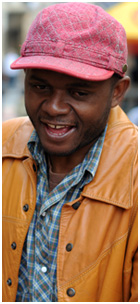
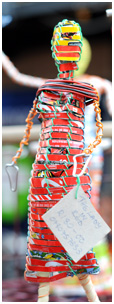
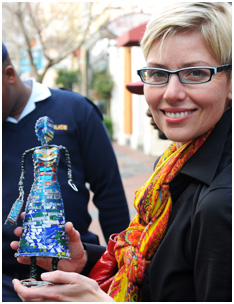
The Cape Malay community is one of the distinctive cultures in Cape Town. Cape Malays are descended from slaves (brought to South Africa by the Dutch East India Company in the 16th century) and political exiles from Indonesia. We love the Malay Quarter (also known as Bo Kaap) for its brightly coloured houses. It’s amazing to walk through the area and smell the deliciously spicy fragrances of Cape Malay cooking, with dishes like samoosas, breyani, boboti and waterblommetjie bredie.

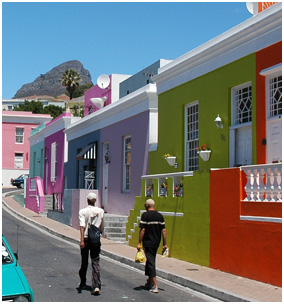
Southwest of the city is a winding coastline of natural wonder called the Atlantic Seaboard. Suburbs on this coastline like Seapoint, Clifton and Camps Bay are prime real estate because they are surrounded by perfect white sandy beaches, turquoise water and the treacherous cliffs of the Twelve Apostles. This is another favourite area and we spent our second day walking from Clifton to Camps Bay beach and enjoying the views.
It doesn’t feel right to describe Cape Town’s magnificence without mentioning the social and political upheaval that has defined much of South Africa’s recent history. I was 16 when I first took part in a political protest, and we saw political violence up close as Apartheid police cracked down on our liberal University campus. I remember the precise moment in 1990 when I learned that Nelson Mandela was to be released from Robben Island, a prison just a few miles away from Cape Town. This was the turning point. The legacy of oppression still lives on in poverty stricken rural areas outside the cities, but there has been a democratic government since 1994 and the future is brighter than ever.
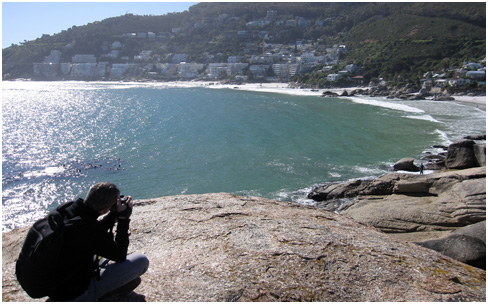
We spent the rest of our South African vacation in a different part of the country, visiting my parents in their new home. But one more night in the city on our way back to Seattle gave us an opportunity to catch up with some old friends and do a final, rushed embrace of the place that was so pivotal in our lives. The University of Cape Town campus, St. Paul’s Church in Rondebosch (where we were married), Cavendish Square in Claremont, my studio apartment in Wynberg, Constantia Nek, Hout Bay, Camps Bay, Suikerbossie, Kloof Nek, Tamboerskloof. We miss it already.









